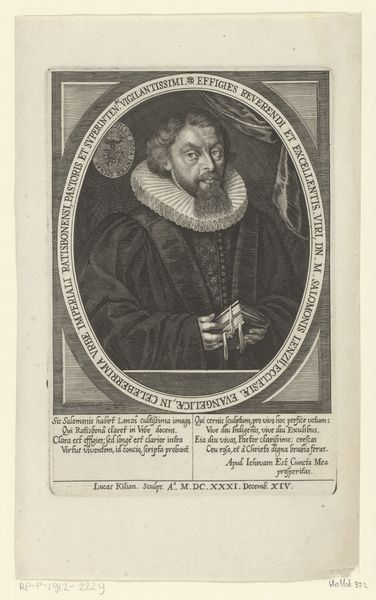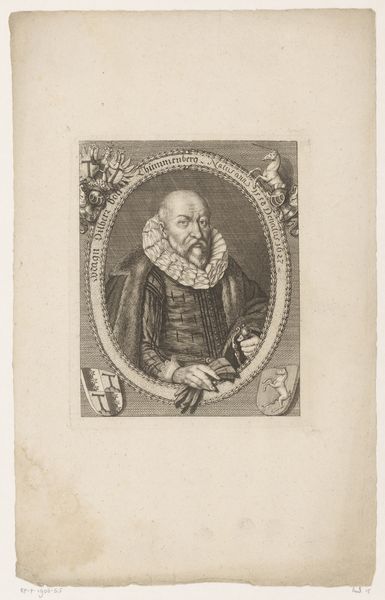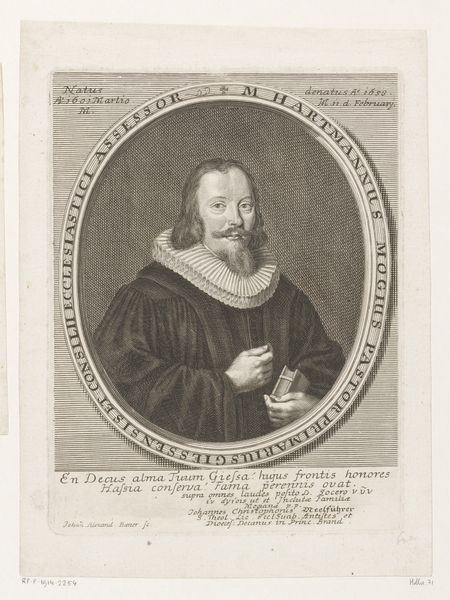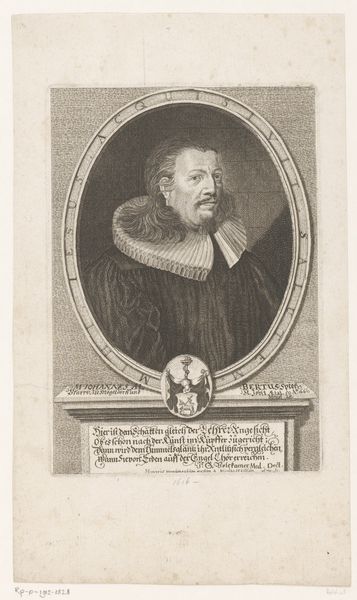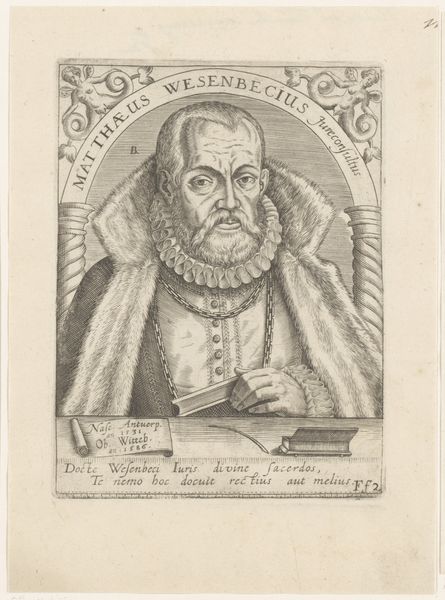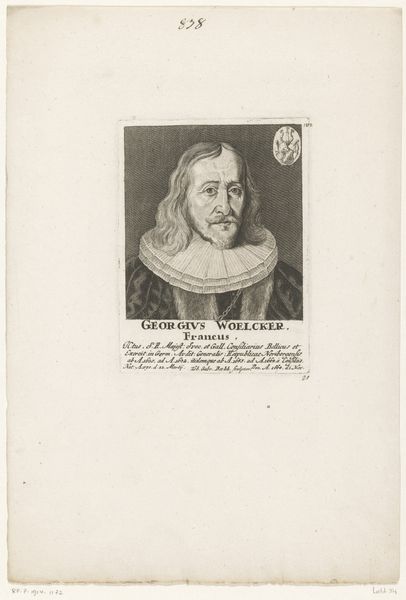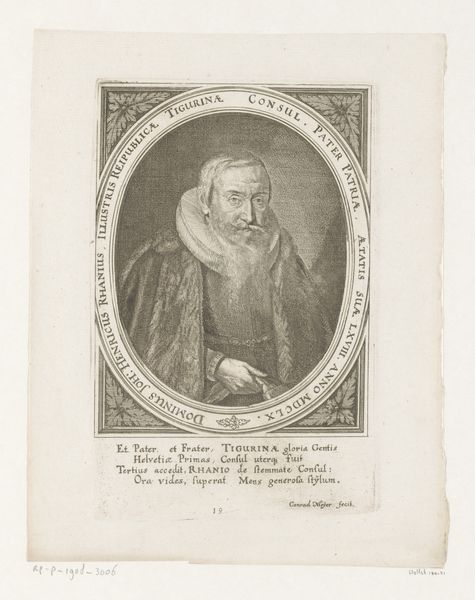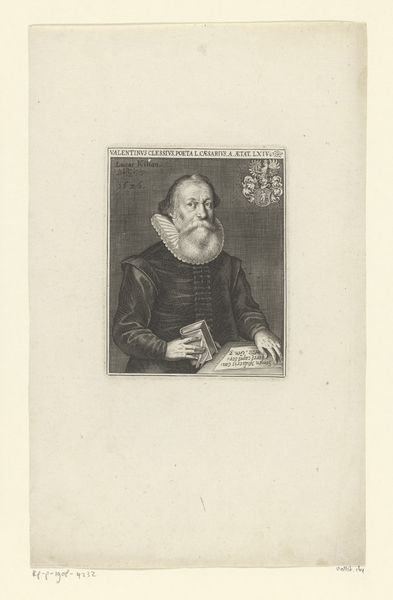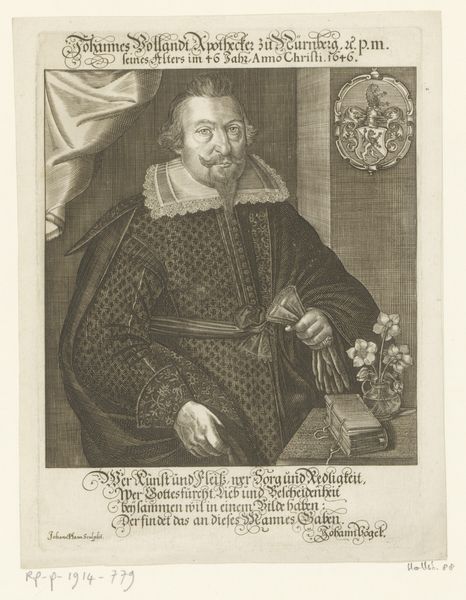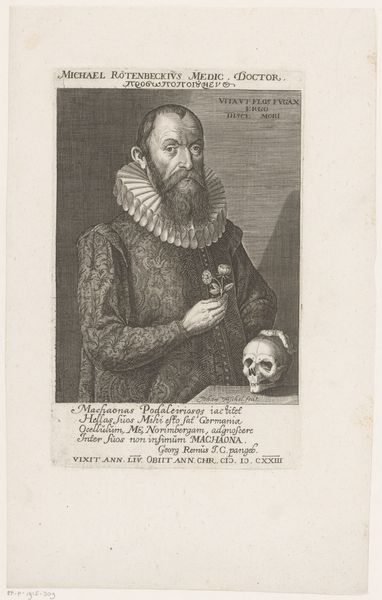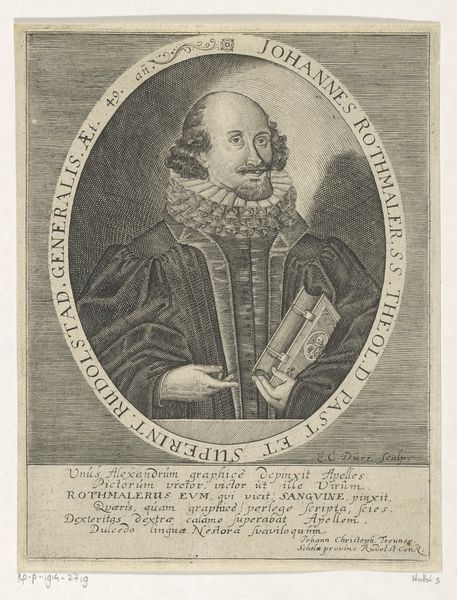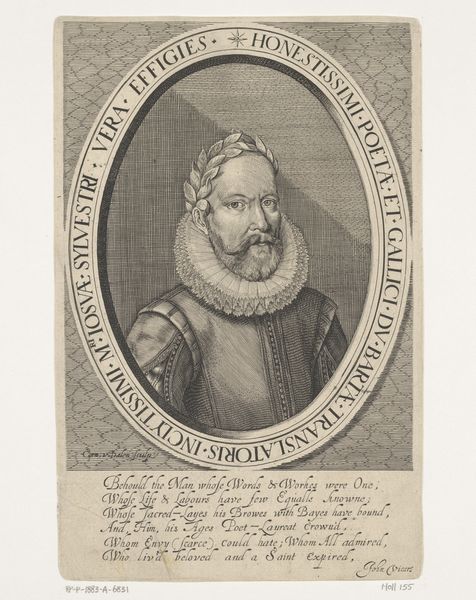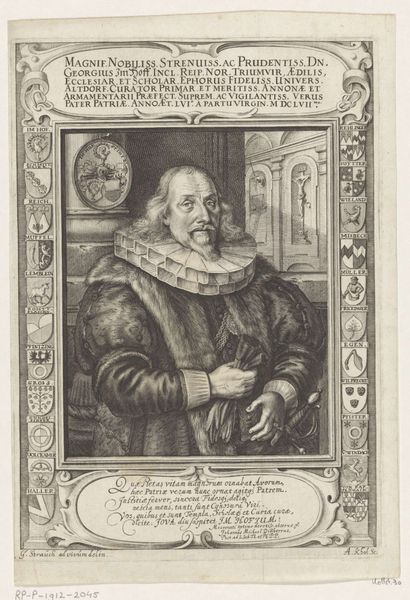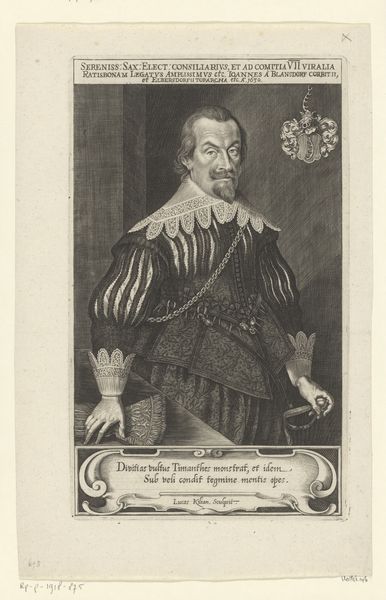
print, paper, engraving
#
portrait
#
pencil drawn
#
baroque
# print
#
old engraving style
#
paper
#
history-painting
#
engraving
#
realism
Dimensions: height 160 mm, width 103 mm
Copyright: Rijks Museum: Open Domain
Curator: Here we have Johann Georg Mentzel's 1733 engraving, a portrait of Johann Ernst Luther. The intricate details in this print are really something to behold. Editor: You know, looking at this, I immediately think of power, but also almost…suffocation. The ruff around his neck seems so tight, like it's squeezing him. And yet, he exudes a sort of controlled strength. Curator: It's interesting that you picked up on the feeling of constriction. The ruff was of course a status symbol in that era, literally elevating the head and face. Mentzel was working within established conventions for portraying figures of authority. But that authority was definitely under challenge at this moment. Editor: Absolutely. But that sense of display, all those meticulously etched details of his garments and bearing, can give way to unease, like he’s locked in amber! This is very present, to me, also within contemporary politics! How relevant these historic portraiture can still be. Curator: It’s difficult to say exactly how Mentzel intended it, though understanding the context gives clues. As an artist working in the orbit of the court, his commission served specific symbolic roles. Engravings like these were instrumental in projecting images of power and lineage, especially during the complex dynastic politics of the Holy Roman Empire. The Luther family's importance at this time can hardly be understated! Editor: Sure, I guess that's right. But something about his eyes, how sharply they're gazing… They hint at the weight of responsibility and, frankly, of the anxiety about succession and legacy! I feel it more acutely precisely *because* of its historical situation: knowing its historical use helps to identify present anxiety of succession, family and future. Curator: You are so right! And to emphasize such connection from the artwork with future perception means the painting serves the purpose for the commissioner that you’ve pinpointed in its artistic intention: it's kind of magical. Editor: It definitely makes you wonder about the actual person, behind the official image! Curator: A powerful testament to how artistic practices reflect socio-political strategies. Editor: Agreed. Now, off to the next amber-encased luminary?
Comments
No comments
Be the first to comment and join the conversation on the ultimate creative platform.
